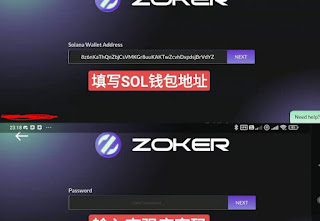How will frequent regulatory policies in the encryption market affect the development of defi?
Due to the continuous introduction of policies, promote the gradual transition from centralization to decentralization, and will regulation have an impact on decentralization?
Decentralized Finance (DFI) is becoming one of the most important sectors in the blockchain industry. In the past two years alone, the total value lock-in (TVL) - the total value of assets locked to various defi platforms - has steadily increased from $21 billion at the beginning of the year to more than $100 billion today.
On the macro level, defi represents a wide range of financial products and services, including the very popular decentralized exchange (DEX). Despite the explosive growth of defi's lending products, insurance and even decentralized derivatives transactions, global regulation still seems out of reach.
Through defi, blockchain technology is redesigning the world financial system to build a more secure, transparent and accessible market under ideal conditions. Financial innovation is intuitively profitable, but due to the lack of supervision, very well funded institutions are still reluctant to enter this field. Some people believe that compliance is the only way out. Although supervision may lead to the centralization of some aspects of defi, compliance projects will exist for a long time. Others say that defi should be self-regulated, and the community must understand what is best for its future. In any case, there will always be unregulated platforms to escape regulation, but whether large-scale self-discipline is really beneficial to the industry remains to be determined.
Although a large number of medium-sized funds have made great profits from investing in digital assets, larger hedge funds are reluctant to take risks. This is partly due to the rigorous review of participants with more prominent regulatory compliance, which can also explain why some of the largest institutions have not yet touched on this asset class.
Eliminate non conformers
The main problem of applying traditional regulatory frameworks to decentralized finance is that their design objectives are different. Traditional finance is conducive to stability, investor protection, implementation compliance and, most importantly, centralization. Defi operates on a system that encourages cooperation among distributed participants by eliminating economic incentives, and the traditional framework cannot be well transformed into decentralized assets without any centralized intermediaries.
In the past few years, the impact of regulation on the cryptocurrency industry has been obvious, providing a sense of certainty for individual investors, thereby increasing the amount of capital entering the digital asset market, supporting innovation and curbing fraud and illegal behavior. This also applies to defi. Although not everyone fully believes it, familiarity and education can be important drivers of adoption.
Robert Whitaker, former law enforcement officer of the illegal financing and proceeds of crime Department of the U.S. Department of Homeland Security and chief operating officer of Huo coin Nevada, said:
"There will always be illegal websites running quietly. Defi platforms that want to be regulated and believe that regulation is a powerful and viable alternative to traditional banking or finance will survive - and in my opinion, they do well."
Once the necessary infrastructure is built to meet the requirements of large institutions, investment in decentralized finance can even become more experimental to accelerate innovation. This year alone, several financial service giants have made great progress in the field of blockchain.
It is said that JPMorgan is developing a proprietary blockchain with its own tokens to facilitate its customers' real-time transfer. In addition, after planning to transfer more than one-third of its eligible assets to the blockchain based hosting platform, HSBC announced this year that it would support the central bank's digital currency (CBDC) through supervision. Morgan Stanley also recently announced that it would provide digital asset exposure to its customers.
From Bank of New York Mellon confirming its support for digital asset custody to BlackRock disclosing the invisible interaction of its research asset classes, the adoption rate must be rising. The question is: can regulation keep up?
Innovation supervision and standardization innovation
Recently, consensys, a leading blockchain technology solution company, received more than $65 million from global financial services leaders such as UBS, JPMorgan Chase and MasterCard, which can give them a better understanding of the types of applications built on Web 3.0.
According to PwC's report, nearly 50% of traditional hedge fund managers are considering cryptocurrency investment. Although these companies may be the first to adopt this approach, this may not happen until the required regulatory infrastructure is built into the defi ecosystem.
Although the global reserve bank has issued numerous warnings about the security, scalability and money laundering risks brought by digital assets, most of them agree with its potential to fundamentally improve the financial system. However, the U.S. Securities and Exchange Commission (SEC) believes that defi seriously lacks investor protection and has requested the establishment of additional permissions to prevent defi products and platforms from slipping away from regulatory loopholes.
Last year, international companies and national regulators began to have a better understanding of blockchain technology. In September 2020, the European Commission proposed a framework to improve consumer protection and establish clearer behavior for participants in the cryptocurrency industry, including the introduction of new licensing requirements.
In late March, the Financial Action Task Force (FATF), the global regulator of terrorist financing and money laundering, announced that it would update its guidelines on a risk-based approach to digital assets and companies dealing with virtual assets. In July, the financial services agency of Japan (FSA) stressed the importance of decentralized financial regulatory rules.
As early as February, SEC Commissioner Hester Pierce said that regulators need to provide legal clarity and experimental freedom for defi space so that it can fully compete with centralized alternatives. However, it is reported that the SEC has also taken action against some entities related to decentralized financial applications.
For example, the report shows that regulators have launched an investigation into the world's largest distributed exchange, and the main developers behind uniswap laboratory mainly focus on how investors use this platform and marketing. In addition, Gary Gensler, chairman of the SEC, recently made some severe comments on the defi industry, claiming that only a few defi tokens are not securities.
Although self-discipline seems ideal for some people, the intervention of the government and financial authorities is inevitable.
Two way compromise
The main challenge for regulators will be to reduce investor risk. If legislation can do this in some way while ensuring that the defi platform complies with the anti money laundering agreement, regulation can bring growth to the field in a risk controllable way.
Nevertheless, mandatory regulation of defi may not be the best way. Traditional regulations apply to transactions between people, and applying these standards to manually written code, namely smart contracts, is a headache and complex task. However, you can create standards through coding principles.
This will involve setting capital limits and creating a risk control framework for private participants in the industry. However, since this goes against the main spirit of decentralized Finance - decentralization, it requires active and cooperative approaches in the field of defi and the innovation oriented attitude of regulators.



评论
发表评论